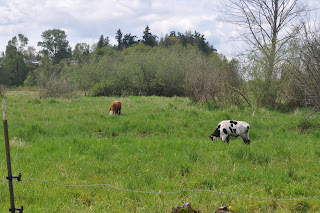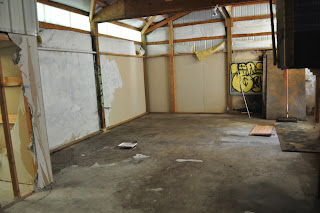Many sites out there are some sort of aggregate site -- they take content from other sites and put them on a list. You'll see them as "the best farm blogs" or they'll write a sentence or two, put in a quote, and a link. Like the huffington post -- who generates little or no content on their own, but collects stories and republishes them. Personally I find this very lazy. It's not easy coming up with unique content and it costs money and take work. In the case of the huffington post, it was sold to AOL for $315 million dollars... and none of that money went to the content providers/bloggers.
I get these requests about once a week. I've deleted the identifying info:
Good Afternoon!
My name is firstname lastname and I operate [deleted].com in townname, state. I enjoy reading blogs from across the country from small farmers who are producing food for their community and sharing their experiences. I would like to bring all these blogs together in one place, so I acquired the domain, [deleted].com
This site would be a news feed of sorts where your blog entries would automatically be posted to a feed on the site's main page. You would still operate your own blog with all the rights and ownership that you currently enjoy, we would simply give people one place to go to find all their favorite bloggers for our local, sustainable farming niche. This would give you access to an incredible increase in readers and allow you to connect, communicate and network with similar bloggers like never before. I also want to emphasize that this site is and will always be completely free.
We would like to build the back end with bloggers that choose to participate and launch with content up and running. If this is something that interests you and you would like to move forward with this project
I am eager to hear form you. Feel free to shoot me an email at email@email.com or call me at xxx-777-zzzz Thanks for your time and have a great day!
Firstname Lastname
My name is firstname lastname and I operate [deleted].com in townname, state. I enjoy reading blogs from across the country from small farmers who are producing food for their community and sharing their experiences. I would like to bring all these blogs together in one place, so I acquired the domain, [deleted].com
This site would be a news feed of sorts where your blog entries would automatically be posted to a feed on the site's main page. You would still operate your own blog with all the rights and ownership that you currently enjoy, we would simply give people one place to go to find all their favorite bloggers for our local, sustainable farming niche. This would give you access to an incredible increase in readers and allow you to connect, communicate and network with similar bloggers like never before. I also want to emphasize that this site is and will always be completely free.
We would like to build the back end with bloggers that choose to participate and launch with content up and running. If this is something that interests you and you would like to move forward with this project
I am eager to hear form you. Feel free to shoot me an email at email@email.com or call me at xxx-777-zzzz Thanks for your time and have a great day!
Firstname Lastname
businessname
xxx-777-zzzz
xxx-777-zzzz
Thanks for your email, Firstname. I'm presuming that your news feed site would be advertiser supported, and that there would be some sort of revenue stream from those advertisers. I'd be happy to provide you content for your site, but I seem to have missed the part where you compensate me for providing it. Please do forward your proposed revenue split or royalty agreement so that I can see the whole proposal.
Regards
Bruce King









































